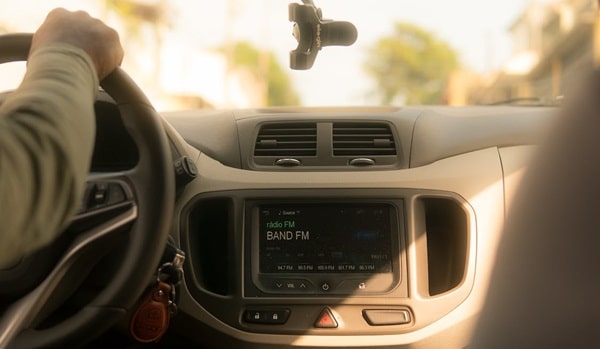We live in an era where ride-sharing services are dominating the daily travel and transportation industry. Among all these apps or services, Uber stands as a prominent figure offering convenience and accessibility to millions worldwide.
According to Statista, the global ride-sharing market is valued at almost $97 billion as of 2022. By 2028, this market is expected to reach a value of around $226 billion.

Business of Apps reports that Uber alone generated a revenue of $31.8 billion in 2022. However, while the app has revolutionized the way people travel, concerns over passenger safety persist. As the Uber platform grows bigger and the number of Uber rides increases, ensuring the safety of passengers becomes paramount.
Today, we’ll look into a few pressing safety concerns Uber must address to prioritize passenger well-being.
#1 Driver Screening and Training
Uber’s screening process for drivers is a cornerstone of passenger safety. However, with the addition of larger vehicles accommodating more passengers, the scrutiny of driver qualifications must intensify.
Many Uber drivers end up on the platform without proper driving training and licenses. There’s also the issue of these drivers being involved in several sexual assault cases. TorHoerman Law reports that between 2017 and 2020, around 10,000 sexual assault incidents were reported to Uber. In a lot of these cases, the sexual assault victims claimed that the Uber drivers were involved.
Many of the sexually assaulted victims filed the Uber sexual assault lawsuit. As per this lawsuit, Uber Technologies, Inc. failed to implement adequate safety measures. The lawsuit also claims that the company has repeatedly failed to conduct proper background checks on drivers.
Thus comes the need to ensure comprehensive background checks, including criminal records and driving history, are imperative to filter out potentially risky drivers. Moreover, mandatory training sessions focusing on defensive driving techniques and passenger safety protocols should be implemented. This will equip drivers with the necessary skills to handle diverse situations effectively.
#2 Vehicle Maintenance Standards
Maintaining a fleet of vehicles in optimal condition is essential to mitigate the risk of accidents. Uber must enforce stringent vehicle inspection guidelines, ensuring that all cars, including larger models used for accommodating multiple passengers, undergo regular maintenance checks.
From tire tread depth to brake functionality, every aspect of the vehicle’s performance should be meticulously examined. This can preemptively address any mechanical issues that could compromise passenger safety.
#3 Child Safety Measures
The transportation of children presents unique safety considerations that Uber must address comprehensively. While Uber offers car seat options for younger passengers, ensuring their proper installation and usage remains a challenge.
Providing clear guidelines for accommodating children of various ages can help mitigate risks associated with improper child restraints. Furthermore, Uber should explore innovative solutions like partnering with child safety organizations to offer educational resources for drivers to prioritize child passenger safety.
#4 Emergency Preparedness
In the event of an emergency, a quick and effective response is crucial to minimizing potential harm to passengers. Uber must establish clear protocols for drivers to follow in emergency situations, including medical emergencies, accidents, and security threats. This entails providing drivers with access to emergency response training and equipping vehicles with essential safety equipment like first aid kits.
Additionally, integrating emergency response features directly into the Uber app, allowing passengers to quickly summon assistance in distressing situations, can enhance overall safety measures.
#5 Fatigue Management
Driver fatigue poses a significant safety risk, particularly in extended trips involving multiple passengers. Uber must implement policies to mitigate the risk of driver fatigue, like limiting consecutive driving hours and encouraging drivers to take breaks between trips.
Utilizing advanced driver monitoring technology to detect signs of fatigue and providing real-time alerts and assistance can help prevent accidents resulting from drowsy driving. Moreover, fostering a culture of driver well-being by promoting healthy lifestyle habits is essential in ensuring drivers remain focused on passenger safety.
In conclusion, while Uber has revolutionized urban transportation, ensuring passenger safety remains an ongoing imperative. By addressing these critical concerns, Uber can enhance its commitment to safeguarding passengers and fostering a culture of safety within the ride-sharing industry.
Amidst all this, Uber also needs to focus on driver safety as well. As reported by KTLA, Uber has recently released driver protection features. These features will protect drivers from false accusations, unfair ratings, and unruly riders. From trip recording to expanded rider verification, the new features have them all.
It’s good to see that Uber is taking these initiatives for their drivers. At the same time, Uber is also putting in the effort to ensure passenger safety. However, the company needs to be consistent in these efforts if they are to address all the passenger safety concerns.
Anantha Nageswaran is the chief editor and writer at TheBusinessBlaze.com. He specialises in business, finance, insurance, loan investment topics. With a strong background in business-finance and a passion for demystifying complex concepts, Anantha brings a unique perspective to his writing.


